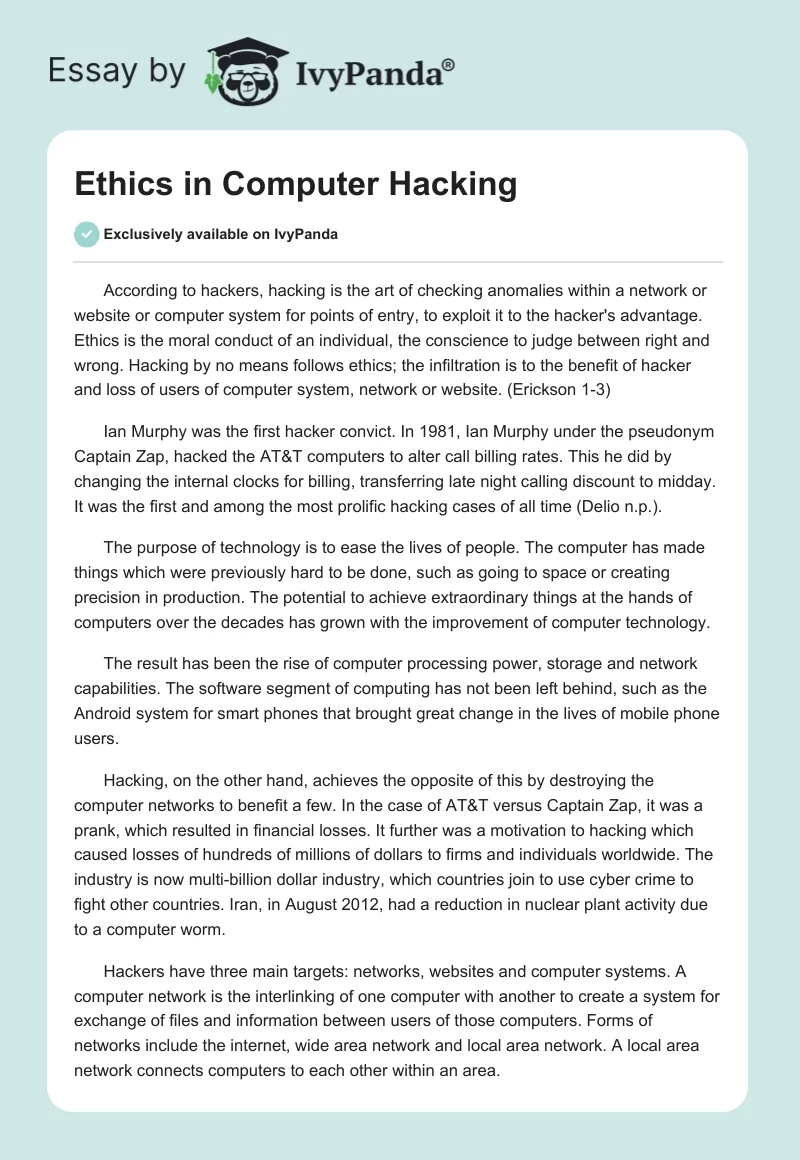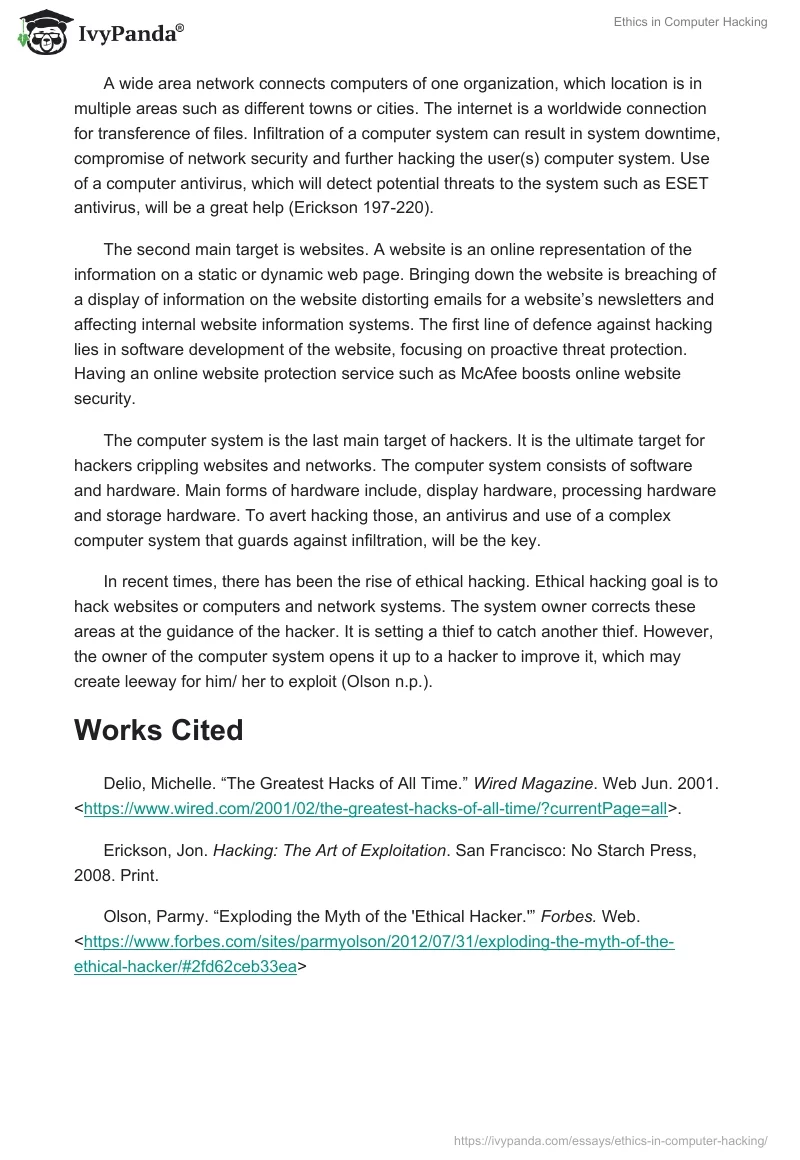According to hackers, hacking is the art of checking anomalies within a network or website or computer system for points of entry, to exploit it to the hacker’s advantage. Ethics is the moral conduct of an individual, the conscience to judge between right and wrong. Hacking by no means follows ethics; the infiltration is to the benefit of hacker and loss of users of computer system, network or website. (Erickson 1-3)
Ian Murphy was the first hacker convict. In 1981, Ian Murphy under the pseudonym Captain Zap, hacked the AT&T computers to alter call billing rates. This he did by changing the internal clocks for billing, transferring late night calling discount to midday. It was the first and among the most prolific hacking cases of all time (Delio n.p.).
The purpose of technology is to ease the lives of people. The computer has made things which were previously hard to be done, such as going to space or creating precision in production. The potential to achieve extraordinary things at the hands of computers over the decades has grown with the improvement of computer technology.
The result has been the rise of computer processing power, storage and network capabilities. The software segment of computing has not been left behind, such as the Android system for smart phones that brought great change in the lives of mobile phone users.
Hacking, on the other hand, achieves the opposite of this by destroying the computer networks to benefit a few. In the case of AT&T versus Captain Zap, it was a prank, which resulted in financial losses. It further was a motivation to hacking which caused losses of hundreds of millions of dollars to firms and individuals worldwide. The industry is now multi-billion dollar industry, which countries join to use cyber crime to fight other countries. Iran, in August 2012, had a reduction in nuclear plant activity due to a computer worm.
Hackers have three main targets: networks, websites and computer systems. A computer network is the interlinking of one computer with another to create a system for exchange of files and information between users of those computers. Forms of networks include the internet, wide area network and local area network. A local area network connects computers to each other within an area.
A wide area network connects computers of one organization, which location is in multiple areas such as different towns or cities. The internet is a worldwide connection for transference of files. Infiltration of a computer system can result in system downtime, compromise of network security and further hacking the user(s) computer system. Use of a computer antivirus, which will detect potential threats to the system such as ESET antivirus, will be a great help (Erickson 197-220).
The second main target is websites. A website is an online representation of the information on a static or dynamic web page. Bringing down the website is breaching of a display of information on the website distorting emails for a website’s newsletters and affecting internal website information systems. The first line of defence against hacking lies in software development of the website, focusing on proactive threat protection. Having an online website protection service such as McAfee boosts online website security.
The computer system is the last main target of hackers. It is the ultimate target for hackers crippling websites and networks. The computer system consists of software and hardware. Main forms of hardware include, display hardware, processing hardware and storage hardware. To avert hacking those, an antivirus and use of a complex computer system that guards against infiltration, will be the key.
In recent times, there has been the rise of ethical hacking. Ethical hacking goal is to hack websites or computers and network systems. The system owner corrects these areas at the guidance of the hacker. It is setting a thief to catch another thief. However, the owner of the computer system opens it up to a hacker to improve it, which may create leeway for him/ her to exploit (Olson n.p.).
Works Cited
Delio, Michelle. “The Greatest Hacks of All Time.” Wired Magazine. 2001. Web.
Erickson, Jon. Hacking: The Art of Exploitation. San Francisco: No Starch Press, 2008. Print.
Olson, Parmy. “Exploding the Myth of the ‘Ethical Hacker.’” Forbes. Web.



